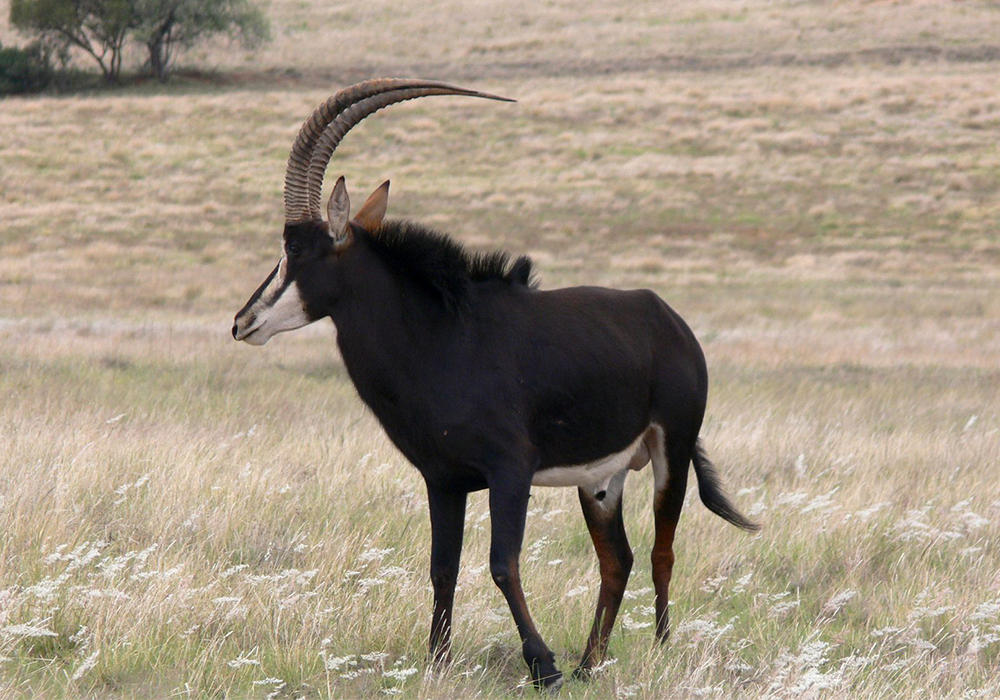
Ruaha National Park is located just south of the central midpoint of Tanzania. The national park encompasses an area of 7,809 square miles (20,226 sq km) making it the largest national park in Tanzania and one of the largest in Africa.
Ruaha National Park is part of the larger Rungwa-Kizigo-Muhesi ecosystem that covers an area of 17,000 square miles (45,000 sq km). Along with Ruaha, the area includes two other game reserves and a wildlife management area. There are three primary areas for safari game-viewers to explore. The Ruaha River area is the most stunning with Mdonya woodlands and the Mbage-Mwagusi circuit
Ngalambulwa Mountain is the tallest point in the park reaching a summit of 5,250 feet (1,600 m). Grasslands and rocky terrain surround this massif adding to the varying landscapes.
The magnificent mammals like elephant, Kudu, Sable and Roan antelopes can easily be spotted in Miombo woodland. The wild dogs are the star attraction of the park. In predators lions, leopards and cheetah are common. Other animals spotted here are giraffes, impala, zebras, bat eared foxes, elands, and Jackals
Ruaha National Park also amuses the visitors with more than 571 species. Commonly spotted are African fish eagle, Ashy starling, Black-bellied bustard, Collared palm-thrush, Crested barbet, Eleonora’s falcon, Emerald-spotted wood dove, Goliath heron, Long-crested eagle, Namaqua dove, Southern ground hornbill, Tanzanian red-billed hornbill and many more.
Although all-round the year is good for game viewing, the dry season is the best (June to October). From June to October, expect to see animals gathered near the dominating Ruaha River, the only source of life in the park.
The park is accessible by road and air. Road. From Iringa town it is 108 km to the main gate (Y-Junction), 625 km from Dar es Salaam and 480 km from Mbeya City.Air. Daily flights from Dar es Salaam and Arusha is the easiest way to Ruaha. Airstrips are located at Msembe and Jongomero. Coastal Aviation, Auric Air and Safari Link all have scheduled flights to Ruaha.
Distance from Dar es Salaam: 625 km (388 miles)
Ruaha National Park enjoys only one rainy season, usually from the end of November to May with annual average rainfall ranging from 500 to 800 mm. The park is located at an altitude between 750 and 1868 meters.
The great Ruaha River travels along the southeastern border of the park. The river name serves as the source for the national park name. This water source also serves as a draw for safari game viewing. A second river, Njombe traverses the park through gorges and rocky broken landscapes. Crocodiles can be commonly seen sunning on the banks of the rivers.
The largest collection of elephants is located here in Ruaha compared to anywhere else in Tanzania. Similarly, there is almost a guarantee that safari-goers will see Great Kudu because of their population. The park predators feature lion, leopard, cheetah, spotted hyena, and wild dog. The park serves as one of Tanzania’s Lion Conservation Units. Giraffe, buffalo, hippopotamus, zebra, warthog, and sable antelope are some of the popular species found within the park.
Ruaha is also a bird lovers paradise with over 570 species of birds found within the park. Hornbills, raptors, bee-eaters, rollers, and many other species make bird-watching a popular activity in the park. This is also home to the rare Eleonora's Falcon during the months of December and January.
The park offers hides and tree houses which are situated in places which provide excellent views of the watering spots most frequented by wildlife. These are inspirational opportunities to have stunning views of the wildlife apart from the traditional vehicle safari.
